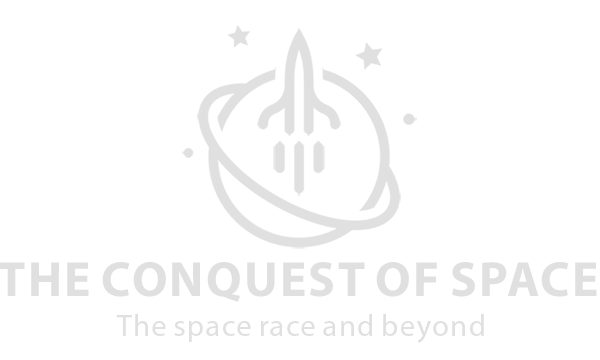The Long Morrow

In the original Twilight Zone episode titled “The Long Morrow” an astronaut played by Robert Lansing is sent on a long voyage to see if life exists on a planet far from our solar system. Just before he leaves he meets a woman (Mariette Hartley) and falls in love. He goes on the journey, but along the way his ability to communicate with Earth is lost. Unable to send or receive information from his home planet he is left to make his own decisions and to wonder about what life is like is his absence. He makes the fateful choice to forgo using suspended animation so that he can age at the same rate as the woman he left behind.
The long wandering astronaut eventually returns safely to the Earth and when we see him again he is an aged old man. He meets the woman he left behind and finds that she appears the same as she did the day he left. She had elected to put herself into suspended animation to prevent her own aging. If the story ended there you would think that it was a predictable “I saw that coming” plot line. The real twist comes when the aged astronaut is told that while he was gone technology had long ago proved that life did not exist on the planet he was sent to explore. His journey was made all the more painful by knowing his sacrifice was for nothing. It is an interesting irony that may indeed play out to some degree in our own exploration of the galaxy. Dr. Michio Kaku predicted that in 200 hundred years we as a civilization might possess the technology to “warp space” and travel faster to far off destinations that are only in our imaginations today. Maybe a future deep space probe will pass Voyager 2 as it streaks at the cosmically slow pace of 34,000 miles per hour on its way to explore the far reaches of our galaxy.
Let us suppose for a moment that Dr. Kaku’s vision of the future never comes to pass. Perhaps the technology is too difficult to create, requires too much energy, too costly for humans to absorb or just is not possible. Maybe we make space travel faster, but it may still take years to explore our outer solar system instead of decades while interstellar travel may remain technologically elusive. Our interest has waned in exploring our own celestial backyard where it is comparatively easy, why would exploring the universe decades from now at a higher cost be any different? We have long thought that dreams fueled our desire to explore space. It was the innate curiosity of the human race to understand what standing here on this rocky planet 93 million miles from our star and seemingly alone in the vast void of space is all about. To a large degree our thinking was wrong. Few things in our society are achievable without money and risk. That it turns out is the fuel for space exploration.
There is another factor why exploring space now rather than waiting on a technology breakthrough is perhaps more urgent than we believe, necessity. In desperate situations, money seems to somehow become less of an issue. It could be the Earth will not survive another 200 years. A host of factors from wars, famines, disease, a rogue asteroid, scarce natural resources, energy, and climate change could conspire to curtail human domination of this planet and our very existence. If that were the case, 100 or 200 hundred years from now what would be the human legacy of planet Earth? Today’s answer seems to be that we are content to rest on the laurels of our accomplishments in space and not think boldly about how space exploration might not just be a critical part of our history, but also our future. We falsely believe that an overstressed planet will keep giving when in reality the planet resources are becoming exhausted to the point where 50 or 100 years from now they could be gone across vast critical commodities. Yet, roaming our galaxy right now are the silent messengers of human existence, the Pioneer, Mariner and Voyager spacecraft. They are too small to be detected and are no longer broadcasting or will soon cease broadcasting as they journey through space. It is unlikely that any of them will ever be found by or stumble upon another civilization in the vast, far reaches of space. Hurtling through space without communications, fuel, or a power they will likely roam until time ends without even passing a planet much less being discovered. While primitive, they are the trace of human existence that could outlast the stars. These nomadic works of human ingenuity are no substitute for human space exploration or even more advanced robotic exploration.
So when is the right time to explore space in a different way? Do will roll the dice and in the hope that 200 years from now that we have a better capability for space travel or much like the astronaut in the Twilight Zone take a chance that doing something, rather than waiting for a technology breakthrough is the path to pursue. Unlike like the idea floated about sending humans on a one way journey to the stars I am not proposing sending humans out to explore our galaxy. A part of me has a measure of skepticism that we will have the means or the will to commit human lives on a one-way “Space Family Robinson” approach. So then what are our alternatives? A few come to mind, but we have to consider that all of them will not provide the return on investment that we seek in space exploration. The first is do nothing and continue to dream, but not explore. This is why science fiction resonates and stirs our imagination. It paints a picture of what is seemingly impossible today, but perhaps possible a million tomorrows from now. Science fiction often breaks the laws of physics and time to make it more appealing to us. If humans could travel at the speed of light to our nearest neighboring star, the message of what they found would take four years to get back to us, but in our fictional eye the communication is instantaneous. We are too impatient a civilization to sit on our hands and wait. The very mind that can paint an inspiring vision of the future is the same mind that lacks the attention or the patience to make it a reality.
It could be though that we are living in the “Bell Curve” of science and science fiction. We are still somewhere in the meaty part of the curve with more breakthroughs and discoveries to be found and with that more science fiction becomes fact. However, the Bell Curve, like so many other postulates and theories may indeed be an immutable law in its own right. Everything around us goes through birth, maturity, and decline. The “Bell Curve” was not a startling revelation about how things tend to work in our world, but an observation of fact applied across many scenarios. The only difference between them is the amount of time it takes. At some point our ability to “break the laws” of science may face the law of diminishing return.

Perhaps we will collectively as a civilization decide to send our “astronaut” on journey now betting that technology will never catch up enough to make any time savings in the future outweigh the benefit of starting early, but what really is decades in the time of space travel? Statistically insignificant, except to us who want to see and know that we using our technology to reach out to the stars even if we will never know what they may find. Now when I say “astronaut” it is not meant to mean one of us as depicted in “The Twilight Zone”, but a representation of us. For example: IBM announced that is had created a microchip that could mimic the human brain. It is no substitute yet for the computing power of our brain, but it is a start. It could be we tap into another science fiction story and somehow port all of humanity into a machine that will carry our limited knowledge across the stars. A machine that could roam the universe until it detected a signal from another civilization to use as beacon to reach out and share information. That almost sounds a little like “Battlestar Galactica” and how the Cylons came to migrate from machine to humanoid. Our robot could search and search as occasionally the light from a passing star would hit it solar arrays and breathe life into the craft. It could beam a message home that it is still working millions of years after it left Earth to whoever is listening with a message that is has found a distant cousin in space or that it is still wandering alone. It might come to pass on such a mission that the message of the discovery of intelligent life would make its way back to an Earth that was long ago vacated by the human race or that long ago forgot about its robotic explorer.
Another way would be to fill a probe with a variety of single cell organisms and send if off to one of the rocky exoplanets we detected in the habitable zone of a distant star. There are a number of ethical issues associated with a project like that such as what if the planet already harbors life? However, for the preservation of Earth-based life we could hope that it would crash on a water rich world and through the process of evolution intelligent creatures might develop millions of years from now. Those creatures would look up at the night sky and dream of reaching the stars never knowing that it was their ancestors in a far of part of the galaxy that started life on their planet. It could very well be a story that has already played out in the history of the universe.
Lastly, it could be that we pack the instruction kit for building a human being into a capsule and send it searching endlessly through the universe looking for a home where a civilization could follow the instructions to build Adam and Eve to keep the human race going. All of these seem like the far-fetched dreams of sci-fi movies and books. As each day passes it seems more likely that some form of microbial life might already exist in our solar system and if it does exist, the odds increase dramatically that we are not the only species in the universe capable of intelligence and space travel. Yet, budget, financial turmoil and politics have us moving at a crawl to explore a solar system potentially teeming with some form of minute life, but life nonetheless.
The Mars Rovers, Mars Curiosity, Dawn, New Horizons, and Cassini are all “flagship” type missions that have enhanced and will enhance our understanding of how we came to be and what else might exist in our solar system. After these missions, the science will continue to be analyzed for decades, but what lies next for our exploration of Enceladus and Europa, of humans on Mars, or harnessing resources from the Moon or nearby asteroids. It seems we have a long ways to go and not much Presidential and Congressional vision to get us there. It may be that visionaries like Rod Serling and other science fiction writers may offer us the best and perhaps our only view of our future in space. Like the astronaut in “The Long Morrow”, I would rather take our chances and explore space now. If technology improves that would be a bonus, but let’s not wait until it’s too late to reach for the stars.
